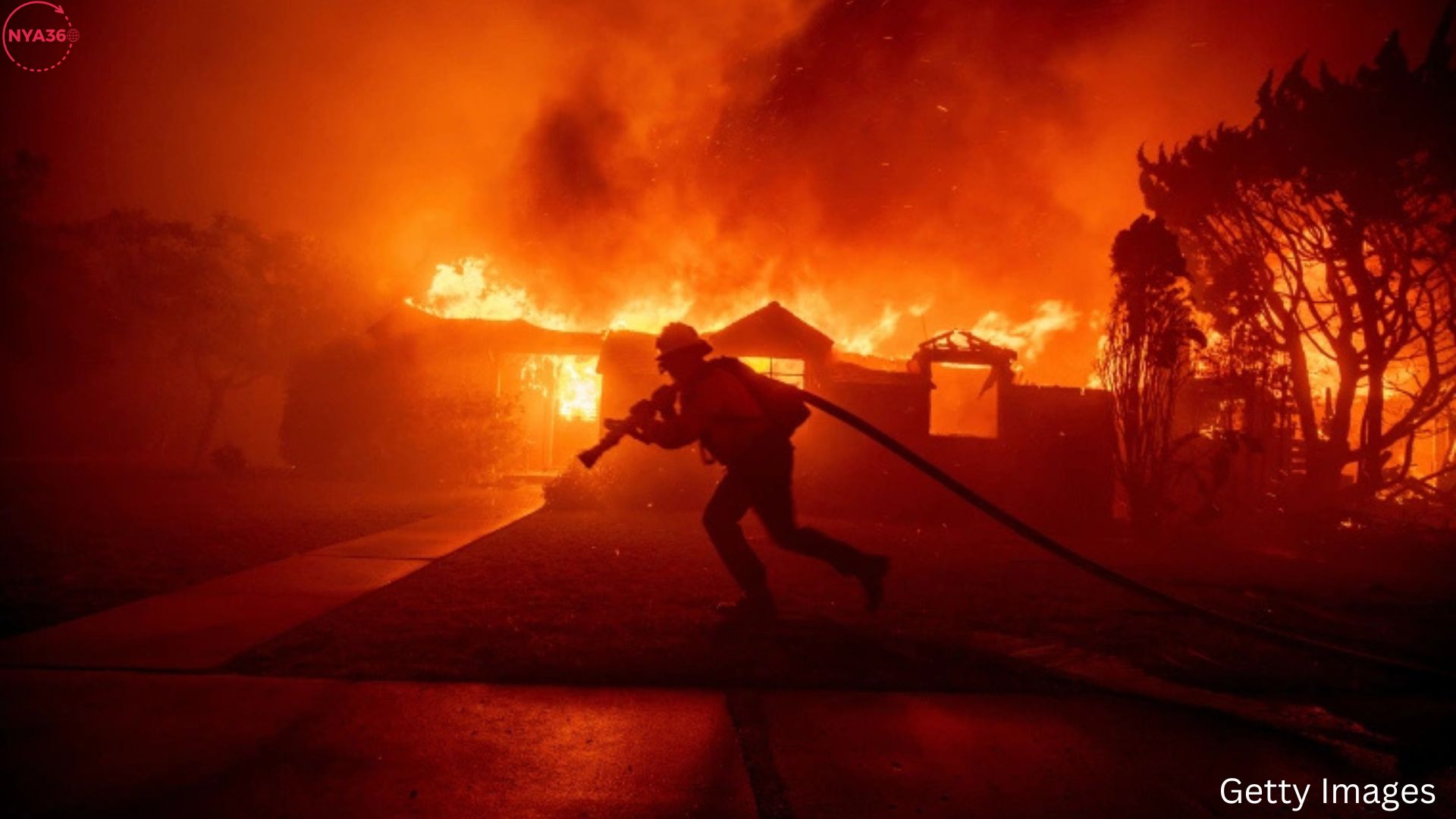With predicted economic damages increasing to $150 billion, the 2024 Los Angeles wildfires have quickly become one of the most expensive and devastating natural disasters in U.S. history. California is coping with the enormous challenge of regulating its reaction as thousands of homes are reduced to ash and lives are cruelly lost. Canada has stepped in to offer essential aid, and Russia and Iran have unexpectedly offered to help put out the fires. The situation has captured the attention of the entire community.
How Serious the Damage Is
Although wildfires have occurred in California before, the 2024 Los Angeles epidemic was the most devastating and extensive to date. Much of Southern California is now a veritable tinderbox due to the combination of high temperatures, extended drought, and the powerful Santa Ana winds that blow through the region. Entire communities have been evacuated as reports indicate that more than 1,500 structures have been destroyed in the greater Los Angeles area alone.
The economic impact is enormous, on top of the obvious human and environmental costs. Professionals in disaster recovery estimate that damages to property, disruptions to businesses, and infrastructure would surpass $150 billion. This amount surpasses the damage caused by hurricanes Katrina and Sandy, making the Los Angeles wildfires one of the most costly natural disasters in U.S. history.

The Real Estate Crash: Setting the Stage for Disaster
The effects of the wildfires in California have been worsened by the state’s housing problem. High demand, little supply, rigid zoning regulations, and onerous government regulations all contribute to the state’s housing market having the nation’s highest prices. Given these risks, an increasing number of people are settling in and constructing homes in urban-wildland interface zones that are prone to wildfires.
One response to the housing crisis has been state-mandated housing development programs, which have pushed for communities to construct additional low-cost homes. Environmental concerns, infrastructure strain, and a desire for local autonomy are among the reasons why some towns have fought against these regulations. Because of the back-and-forth between state and municipal administrations, development has become disjointed, putting at greater risk already vulnerable communities from wildfires.
Housing policies in California need to be adjusted to account for the reality of climate change, according to experts. Adding more homes without thinking about how to make them more resistant to wildfires will make the problem worse. To lessen the blow of future wildfires, we need stricter construction regulations, more effective city planning, and focused funding for fire prevention.
The Reaction of Governments Worldwide
Many resources have been mobilized by the state and local governments of California to fight the flames. Firefighters, supplies, and money were quickly sent out when Governor Gavin Newsom proclaimed a state of emergency. Critics have pointed to previous policy mistakes as a possible reason the state is less effective in preventing and controlling wildfires, which has affected its response. California has cut financing for forest management and controlled burns, two methods used to lessen the likelihood of wildfires, in the past few years. Some feel that the state was unprepared for the wildfire season this year due to these cuts and that the problem was made worse by the fact that climate change is becoming more intense.

Canada was one of the first countries to offer aid on a global scale. To aid with the containment of the fires in Los Angeles, firefighting teams from Canada have sent troops, equipment, and aviation resources. These teams have prior expertise in dealing with wildfires in their home country. As firefighter resources in California are already at a premium, their quick action has been an absolute lifesaver. Russia and Iran have unexpectedly offered to help put out the wildfires. Russia has suggested deploying specialized firefighting aircraft and troops due to their considerable experience in battling Siberian wildfires. Technical assistance and equipment have been extended to California by Iran, a country renowned for its ingenuity in dealing with dry environments. These offers highlight the growing consensus that climate-driven disasters necessitate a worldwide response, and their diplomatic overtones only serve to heighten the disaster’s global significance.
The Incontestable Aspect of Climate Change
The harsh truth of climate change is central to the wildfire catastrophe. A combination of factors, including increased global temperatures, protracted droughts, and other severe weather occurrences, has made California a state prone to flames. The state’s wildfire season is becoming both longer and more intense, according to scientists.
Political leaders in California have been very clear about their intention to fight climate change for quite some time. Nevertheless, there is a disconnect between policies and actions. The state’s investments in renewable energy and reductions in greenhouse gas emissions have not yet resulted in effective plans to reduce the likelihood of wildfires. The tragic wildfires are a sobering reminder of how interrelated all of the world’s climate crises are. There needs to be international cooperation on climate adaptation and resilience as nations like Brazil, Canada, and Australia confront similar issues at the same time that the United States fights its flames.
The Real Price Paid by Humans
The human toll of the wildfires is what matters, behind the numbers and discussions about legislation. Numerous families have lost both their homes and their means of subsistence, leading to thousands of displacements. All available emergency shelters are at or near capacity, and relief groups are working around the clock to ensure that all impacted people have access to food, water, and medical assistance.

The mental and emotional cost is enormous. In addition to destroying houses, the wildfires have weakened many people’s feeling of safety and stability. Along the long road to recovery, it will be necessary to restore lives and communities in addition to reconstructing structures.
How to Proceed
The flames in Los Angeles should serve as a wake-up call to everyone, not just those in California. A combination of short-term measures and more comprehensive plans is needed to resolve the situation. Here are the main steps:
More money must be allocated to forest management, controlled burns, and cutting-edge firefighting technology if we are to succeed in reducing the occurrence of fires.
Climate Resilience: To build a resilient society, lawmakers should emphasize adaptation strategies, such as educating the public and improving infrastructure.
Protecting vulnerable populations requires housing reform that strikes a balance between the need for affordable housing and the requirement for resilient communities in the face of wildfires. The capacity of the state to react to and recover from catastrophes can be enhanced through global cooperation by making use of international knowledge and resources.
A ray of Sunshine
Amidst the chaos, tales of strength and unity have surfaced. People all across the world are pitching in to help alleviate the situation, and local communities are rallying around one another. The path ahead may be difficult, but there is promise for a better future in the shared determination to rebuild and adapt. The 2024 flames in Los Angeles serve as a sobering reminder of the difficulties brought about by climate change, bungled policies, and the intricate web of international dependency. Amid this unprecedented calamity, California is fighting for its future and for a world that is better prepared to manage and lessen the effects of climate-driven disasters.
The critical situation highlights the immediate requirement for courageous measures and global collaboration. The future must be shaped by a resolve to protect humanity and the earth, whether that’s through more effective housing regulations, actions to increase resilience to climate change, or international collaborations. , only then will California and the rest of the globe be able to rebuild stronger after this terrible disaster.
Follow us on social media: Instagram, Threads Twitter X @nya360_ YouTube & Facebook @nya360.





